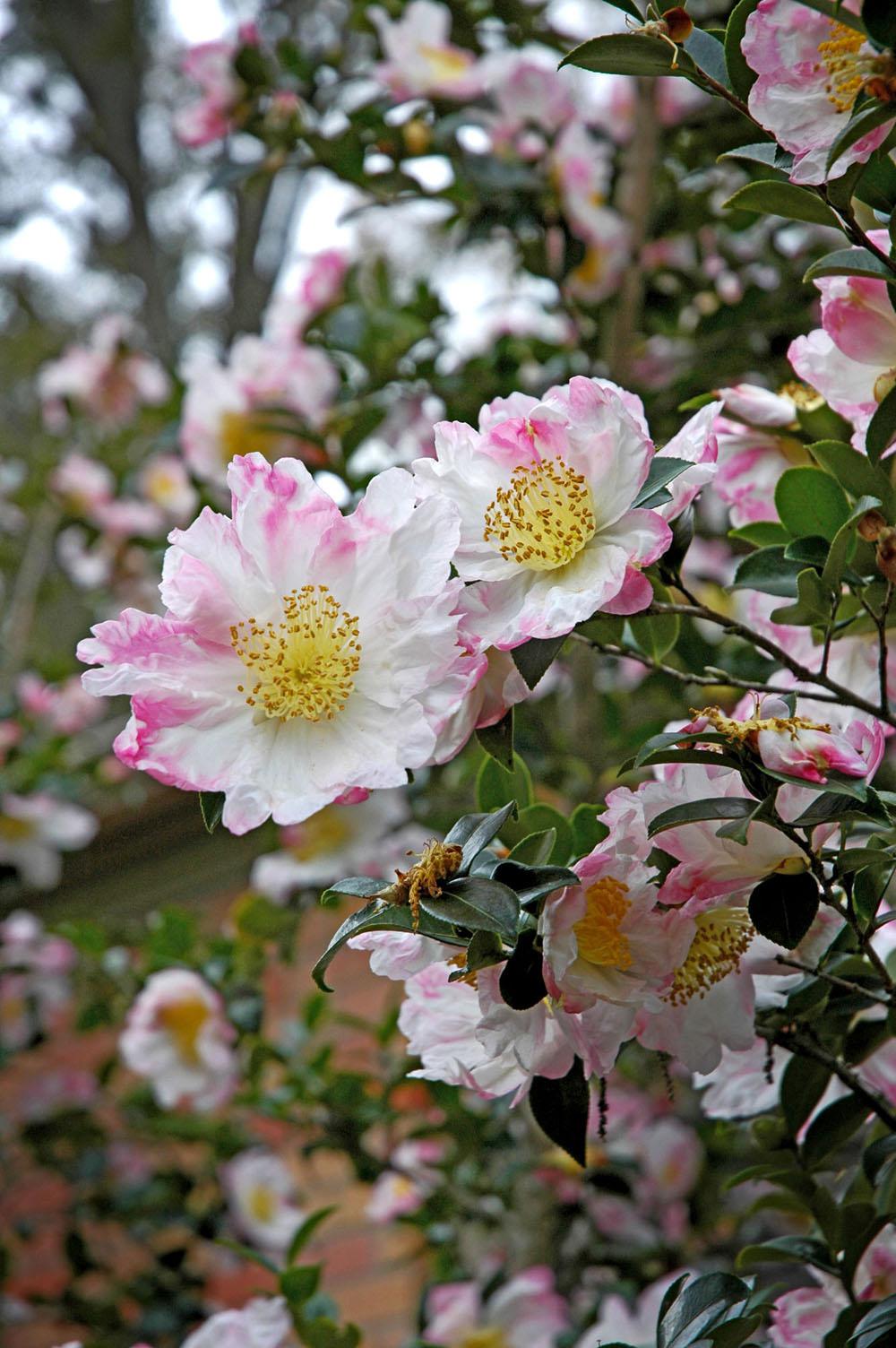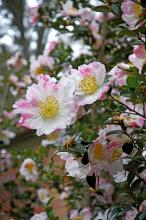Information Possibly Outdated
The information presented on this page was originally released on December 14, 2006. It may not be outdated, but please search our site for more current information. If you plan to quote or reference this information in a publication, please check with the Extension specialist or author before proceeding.
Mississippi's camellias deserve extra attention
By Norman Winter
MSU Horticulturist
Central Mississippi Research & Extension Center
Mississippi is legendary when it comes to camellias and should soon have some stops along the American Camellia Society's upcoming National Camellia Trail. This trail will begin in the Pacific Northwest, move down the Pacific coast before turning east toward the Gulf states, then proceed north along the eastern seaboard.
The America Camellia Society is considering nominations from their members on which gardens or towns would make a significant stop along the trail. Natchez would be an obvious. The Gulf Coast Camellia Society has done much to preserve our past in print. They record that a camellia came to Woodville from Europe in 1820 and later became known as Woodville Red.
They also have republished an article written by Edwina N. Mogabgab for the 1950 edition of the American Camellia Society Yearbook. It is amazing to read this history from her perspective and to visualize the camellias she found in Pass Christian, Bay St. Louis, Waveland, Ocean Springs and a place in Hancock County called Logtown, which she referred to as a ghost town.
Here is an example from that 1950 article titled “Old Camellia of the Mississippi Gulf Coast”:
“Over 100 years ago a small potted Alba Plena was bought from Indian peddlers at the French Market in New Orleans, Louisiana and planted in the very small front garden at 218 North Beach, … The plant, growing not more than a few feet from the porch, is situated about 20 feet from the front beach road. At one time it was almost tree size, but with age and the constant whipping from salt spray and winds it is now in very poor condition and not more than 5 feet high. Each year, however it sill gives forth large and beautiful blossoms. In the 1947 hurricane that hit the Coast full force, this bush withstood the spray from 20-foot waves that broke at the edge of the sidewalk and swept over the top of the house behind it. The street or beachfront road in this section was completely washed away. … It would seem this delicate white-flowered camellia has proved the stamina of its kind.”
The Gulf Coast Camellia Society has a monumental effort cataloging what remains after Hurricane Katrina. Like the camellia mentioned above, they will persevere and stake their claim to a spot on the trail.
If I had a vote or could nominate, I would have to include the town of Brookhaven. Brookhaven is steeped in more recent camellia history, thanks to the late Thomas Perkins III. It is a real accomplishment to become president of a local, state or national plant society. But Thomas was a twice president of the International Camellia Society in the late 1980s and in the early 1990s.
His love and passion has paid dividends. Brookhaven's historical and modern homes include camellias in the landscapes, and the city uses them everywhere. On a recent tour, I saw camellias being planted at a church, a bank, the library and the hospital.
Camellias have been planted along the streets in downtown Brookhaven as part of city beautification. They are alternating two varieties of Camellia sasanquas. The first is Kanjiro, a profuse bloomer producing semi-double blossoms with rose-pink petals and bright yellow stamens.
The other is called O-nishiki, named in the late 1800s in Japan. Thomas Perkins III may be responsible for it being in the United States today and in production in Mississippi. The flowers are large for a sasanqua. They are white ruffled with a dark pink blush on the margins. If that weren't enough, also consider this is one of the camellias that offers an enticing fragrance.
There are several more Mississippi cities suitable as stops on the American Camellia Society's national Camellia trail. If your town is one of them, then go the American Camellia Society web site and make your voice heard. If you find yourself void of camellias, then plant some soon and become part of Mississippi's legend.








